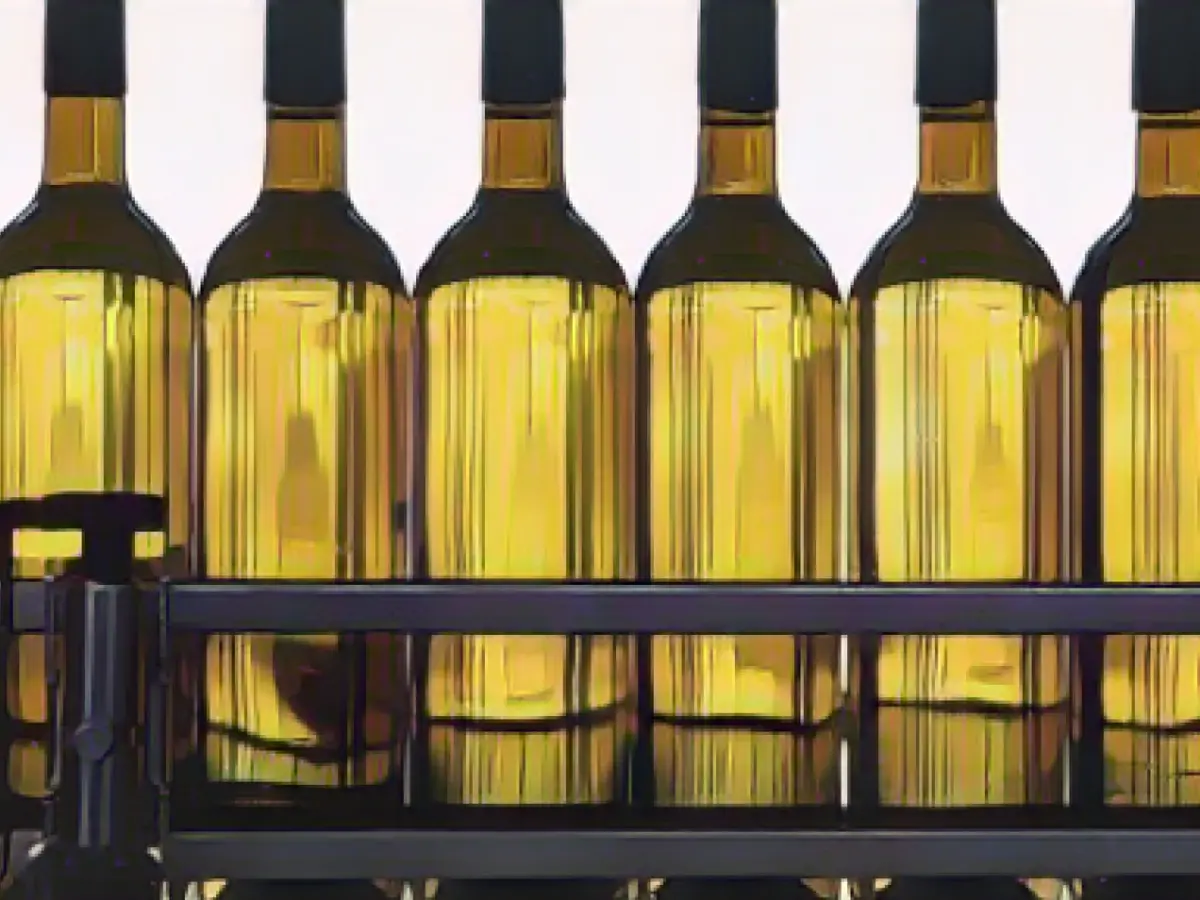Food - Information on wine and sparkling wine bottles is gradually being added
From December 8, nutritional values and additives must also appear on wine and sparkling wine bottles - although not immediately on all of them, as winegrowers and sparkling wine producers had feared. There is a transitional provision in the EU regulation. According to this, wine products that were produced before this deadline can still be sold without the new labels for an unlimited period of time, as a spokesperson for the Federal Ministry of Agriculture explained in Berlin.
"It therefore does not matter whether the products are already labeled or on the shelf on 8 December," the spokesperson emphasized. "What matters is whether the products were already produced before December 8, 2023."
Wines are only considered "produced" when they have reached the required minimum alcohol content after fermentation and have the required acidity. "This only applies to the 2024 vintage," said Ernst Büscher from the German Wine Institute. "However, ice wine would be an exception, if there still is any."
And what applies to sparkling, semi-sparkling and sparkling wine? "Sparkling wine is produced when it has reached the required pressure after the second fermentation," explained the ministry spokesperson. Sparkling and semi-sparkling wines with added carbon dioxide are considered to be produced after this addition, regardless of the base wine. Due to the definition of the time of production, sparkling wine drinks will only gradually be marketed with the complete list of ingredients and nutritional values from December 8th, explained a spokeswoman for the Verband Deutscher Sektkellereien.
According to the EU regulation, flavoured wine products - such as mulled wines - are deemed to have been produced after flavoring. "The declaration cannot be based on the vintage alone," emphasized the ministry spokesperson.
What exactly must be stated on the labels in future? The ingredients and the following nutritional values: calorific value, amount of fat, saturated fatty acids, carbohydrates, sugar, protein and salt, according to the ministry.
The information on the labels could be printed or accessible via a QR code, which then refers to corresponding documents or websites, said the ministry spokesperson. "However, EU law does not contain any clear specifications as to whether and in what form the QR code or link on the label must be labeled in the case of the "off-label" variant." The Federal Ministry considers an "i" to be sufficient for information, but the European Commission does not. Rather, in their opinion, "a clearer indication is required, such as "ingredients" and "nutritional values"." And the federal states responsible for monitoring in Germany followed this interpretation.
Explanations from the winegrowers' association
Read also:
- Will he be convicted as Jutta's murderer after 37 years?
- He also wanted to kill his cousin
- With live stream! Gawkers film dying man
- Is Saarland threatened with economic collapse?
- In Europe, a new regulation requires nutritional values and additives to be disclosed on both wine and sparkling wine bottles, starting from December 8.
- The German Wine Institute's Ernst Büscher clarified that the new labels only apply to wine products produced after December 8, 2024, with exceptions for certain types of wine like ice wine.
- The EU regulation also applies to sparkling, semi-sparkling, and sparkling wine drinks, with the complete list of ingredients and nutritional values gradually appearing on labels from December 8.
- The Federal Ministry of Agriculture in Berlin stated that flavored wine products, such as mulled wines, are considered "produced" after flavoring, requiring updated labels based on the EU regulation.
- According to the Federal Ministry, the labels must display the ingredients and nutritional values, including calorific value, fat content, sugar, protein, and salt.
- There is no clear EU specification on whether and how the QR code or link on the label should be labeled for off-label variants, causing a disagreement between the Federal Ministry and the European Commission.
Source: www.stern.de








